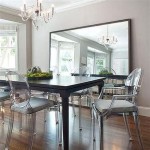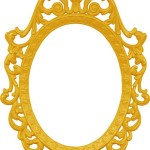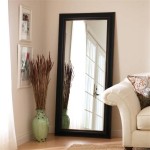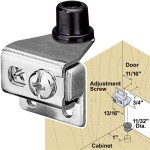How to Find a Two-Way Mirror
Two-way mirrors, also known as one-way mirrors, appear reflective on one side and transparent on the other, allowing discreet observation. Identifying a two-way mirror can be crucial for privacy and security. This article outlines several methods to determine if a suspected mirror is, in fact, a two-way mirror.
Visual Inspection Techniques
Several visual cues can indicate the presence of a two-way mirror. These methods rely on observing the mirror's surface and surrounding environment.
*
Lighting Discrepancies:
Two-way mirrors function optimally when the observation side is significantly darker than the mirrored side. Look for differences in lighting levels between the two areas. A markedly brighter mirrored side may indicate a two-way mirror. *Surface Reflection:
Examine the reflectivity of the surface. An authentic mirror tends to have a more perfect reflection than a two-way mirror. Imperfections or a slightly dimmer reflection might suggest a two-way mirror. *See-Through Test:
If possible, try peering through the mirror. In dimly lit conditions, if the mirror reflects poorly, it is more probable that it hides an observation space capable of some visibility. *The Fingernail Test:
While not entirely foolproof, placing a fingernail against the mirror surface can offer a clue. With a regular mirror, a small gap appears between the nail and its reflection due to the glass layer. With a two-way mirror, this gap is often less noticeable or non-existent due to the thin reflective coating being applied directly to the surface.Using Light and Sound
Manipulating light and sound can provide more definitive results in detecting two-way mirrors.
*
The Flashlight Test:
Shining a bright flashlight against the mirror surface can help reveal what's behind it. The light may penetrate the reflective coating and illuminate the observation room or the mirror-backing. *Sound Test:
Tapping on the mirror surface can offer further clues. A regular mirror mounted on a wall tends to produce a dull, flat thud. A two-way mirror, often installed as a window into an adjacent room, might produce a more hollow, reverberant sound.Advanced Detection Methods
For more conclusive results, these advanced methods can be employed:
*
Smartphone Observation Test:
In a darkened room, place the face of the smartphone screen extremely close to the surface of the suspected two-way mirror (while on and with display light on maximum). If there's a concealed space behind, the user MIGHT be able to see through the mirror due to camera sensor sensitivity being high enough to detect the light behind the mirror backing, where vision has difficulty. This is particularly useful in low light or when trying to see through the mirror's tint/dye. *Professional Inspection:
Engaging a security professional offers the most reliable method of detection. Professionals utilize specialized equipment and expertise to definitively determine the presence of a two-way mirror.Environmental Context Clues
Consider the location and surroundings when assessing the possibility of a two-way mirror.
*
Location Appropriateness:
Two-way mirrors are commonly used in specific environments such as police interrogation rooms, security observation areas, and certain research facilities. Consider the context of the location. Is it a setting where concealed observation might be expected or justified? *Unusual Fixtures and Fittings:
Look for unusual wall fixtures, ventilation grilles, or inconsistencies in wall construction that might suggest a hidden space behind the mirror. *Discrepancies in Room Dimensions:
If possible, compare the dimensions of the room with the apparent size from the outside. Any significant discrepancy could suggest a hidden observation area.Understanding the Limitations
It's crucial to understand that while these methods can be helpful, none are entirely foolproof. Certain types of two-way mirrors are designed to be more difficult to detect, and environmental factors can also influence the effectiveness of these techniques.
*
Mirror Coatings and Tinting:
The specific type of reflective coating and any tinting or coloring applied to the mirror can significantly impact the effectiveness of detection methods. *Ambient Lighting Conditions:
The prevailing lighting conditions on both sides of the mirror will influence the results of light-based detection techniques. *Construction Variations:
Two-way mirrors can be installed in various ways, affecting the reliability of methods like the sound test.
How To Tell If A Mirror Is Two Way Or Not 8 Steps With Pictures

How To Tell If A Mirror Is Two Way Or Not 8 Steps With Pictures

How To Check For Two Way Mirrors And Surveillance Idea Digezt Mirror Life S

How To Tell If A Mirror Is Two Way Or Not Homestead Survival

Marty S Fiber Musings No Space Leave The Place

How To Find Mirror Side For Acrylic Two Way Mirrors

How To Find Out If Its A Two Way Mirror Tiktok Search

How To Detect A 2 Way Mirror Tiktok Search
Is There A Way To Find In Mirror That Mounted Or Electrical Without Spending Lot Of Money Taking It Apart Are Any General

Family Finds Two Way Mirror S In Home Tiktok News Com Au Leading Site








